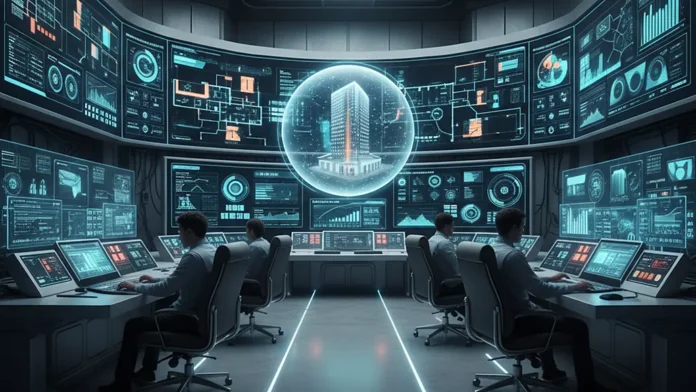The evolution of lighting controls smart buildings represents a paradigm shift from simple on-off switching to sophisticated ecosystem management that integrates illumination with broader building intelligence systems. These advanced control platforms transform lighting from a basic utility service into a responsive infrastructure component that adapts to occupant needs while optimizing energy consumption and supporting building-wide operational objectives.
Evolution from Traditional Controls to Intelligent Systems
Traditional lighting control systems relied primarily on manual switches and simple timing devices that provided basic functionality without considering occupant needs or energy optimization opportunities. Modern lighting controls smart buildings incorporate sensors, processors, and communication networks that enable sophisticated response to environmental conditions and user requirements.
The transition to networked control systems has enabled centralized management and monitoring capabilities that provide facility managers with unprecedented insight into lighting system performance while enabling remote troubleshooting and optimization. These capabilities reduce operational costs while improving system reliability and user satisfaction through proactive maintenance and adjustment capabilities.
Wireless communication protocols have eliminated many of the installation challenges associated with traditional wired control systems while enabling more flexible control zone configurations and easier system expansion or modification. These advances support both new construction and retrofit applications where traditional wiring installation might be prohibitively expensive or disruptive.
Sensor Technology and Environmental Monitoring
Advanced sensor technologies enable lighting control systems to respond to multiple environmental factors simultaneously while maintaining optimal conditions for building occupants. Occupancy sensors have evolved beyond simple motion detection to include sophisticated presence sensing that can distinguish between different types of activities and adjust lighting accordingly.
Daylight sensors provide real-time measurement of natural light availability while enabling automated adjustment of artificial lighting to maintain consistent illumination levels throughout changing daily and seasonal conditions. These sensors must be carefully calibrated and positioned to ensure accurate response while avoiding false readings that might compromise system performance.
Air quality sensors and environmental monitoring capabilities integrated into lighting control systems provide comprehensive building environmental management while supporting occupant health and comfort objectives. These multi-sensor approaches demonstrate the evolution of lighting controls toward comprehensive environmental management platforms.
Artificial Intelligence and Machine Learning Integration
Machine learning algorithms enable lighting control systems to learn from occupant behavior patterns while automatically optimizing performance based on historical data and changing conditions. These systems adapt to user preferences and building usage patterns without requiring constant manual adjustment or programming updates.
Predictive analytics capabilities enable lighting systems to anticipate occupant needs while optimizing energy consumption through proactive system adjustment rather than reactive response to current conditions. Weather forecasting integration and occupancy prediction help systems prepare for changing conditions while maintaining appropriate performance levels.
Artificial intelligence applications in lighting controls promise even more sophisticated building management capabilities that can coordinate lighting with HVAC, security, and other building systems while optimizing overall building performance rather than addressing individual systems in isolation.
Integration with Internet of Things Platforms
Internet of Things connectivity enables lighting control systems to participate in broader smart building ecosystems while providing data that supports comprehensive building management and optimization efforts. These integrated approaches create synergistic benefits that exceed the sum of individual system capabilities.
Cloud computing platforms provide scalable data processing and storage capabilities that enable sophisticated analysis and optimization while supporting remote monitoring and management from any location with internet connectivity. These platforms reduce local infrastructure requirements while providing enhanced functionality and reliability.
Edge computing capabilities integrated into lighting control systems enable local processing and decision-making that maintains system functionality even when cloud connectivity is unavailable while reducing bandwidth requirements and improving response times for time-critical control functions.
Occupant-Centric Control and Personalization
Personal control interfaces enable individual users to customize lighting conditions while maintaining coordination with broader building systems and energy efficiency objectives. Mobile applications and voice control interfaces provide convenient access to lighting controls while supporting different user preferences and technical comfort levels.
Circadian lighting programming automatically adjusts color temperature and intensity throughout the day to support natural biological rhythms while maintaining adequate illumination for specific tasks and activities. These systems balance biological support with functional requirements while reducing the need for conscious user intervention.
Workspace personalization capabilities enable individual control zones that respond to personal preferences while integrating with open office layouts and shared spaces that serve multiple users with different lighting preferences and requirements.
Energy Management and Demand Response
Dynamic energy management capabilities enable lighting control systems to respond to utility pricing signals and demand response requests while maintaining appropriate illumination levels for building occupants. These systems provide economic benefits while supporting grid stability and environmental objectives.
Load shedding capabilities enable lighting systems to reduce energy consumption during peak demand periods while maintaining safety and security illumination requirements. Automated load management prevents disruption to building operations while providing utility system support during critical periods.
Energy reporting and analytics capabilities provide facility managers with detailed consumption data while identifying optimization opportunities that can further improve system performance and reduce operational costs throughout the building lifecycle.
Security Integration and Access Control
Lighting control systems increasingly integrate with security and access control systems to provide coordinated building management while enhancing safety and security through intelligent illumination strategies. These integrated approaches support both routine operations and emergency response procedures.
Intrusion detection capabilities enable lighting systems to respond to unauthorized building access while providing appropriate illumination for security cameras and human security personnel. Automated response protocols coordinate lighting with alarm systems while supporting law enforcement and building security objectives.
Emergency lighting integration ensures that lighting control systems maintain appropriate illumination during power outages and emergency conditions while supporting occupant egress and emergency response activities through intelligent system operation during critical situations.
Maintenance and System Optimization
Predictive maintenance capabilities built into modern lighting control systems identify potential equipment failures before they occur while scheduling maintenance activities to minimize disruption to building operations. These capabilities reduce both maintenance costs and system downtime while improving overall reliability.
Performance monitoring and diagnostic capabilities provide facility managers with real-time system status information while enabling remote troubleshooting and optimization that reduces the need for on-site service visits. These capabilities improve both system reliability and maintenance cost management.
System commissioning and ongoing optimization procedures ensure that lighting control systems continue to operate as intended throughout their service life while adapting to changing building needs and usage patterns over time.
Interoperability and Standards Compliance
Open protocol standards enable lighting control systems to integrate with equipment from multiple manufacturers while avoiding vendor lock-in scenarios that might limit future system expansion or modification options. These standards support both competitive procurement and long-term system flexibility.
Backward compatibility considerations ensure that lighting control system upgrades can incorporate existing equipment where appropriate while providing migration paths that protect previous investments in lighting infrastructure and control equipment.
Industry standardization efforts continue to evolve toward greater interoperability while supporting innovation and competitive product development that benefits building owners through improved functionality and reduced costs.
Cybersecurity and Data Protection
Network security considerations have become critical as lighting control systems become more connected and capable of collecting detailed information about building usage patterns and occupant behavior. Security protocols must balance system functionality with privacy protection and network security requirements.
Data encryption and secure communication protocols protect both system operation and occupant privacy while maintaining the functionality that enables advanced building management and optimization capabilities. These security measures must be balanced against system complexity and operational requirements.
Access control and user authentication procedures ensure that only authorized personnel can modify lighting control system settings while providing appropriate access for routine operation and maintenance activities that support ongoing system performance.
Future Development Trends and Emerging Technologies
Emerging technologies including 5G connectivity, edge computing, and advanced sensor technologies promise even greater capabilities for lighting control systems while supporting more sophisticated building management and occupant service applications.
Blockchain technology applications in building systems may provide secure, distributed control and data management capabilities that enhance both system security and operational flexibility while reducing dependence on centralized cloud platforms.
Quantum computing applications remain speculative but may eventually enable unprecedented optimization capabilities for complex building systems that must balance multiple competing objectives while serving diverse occupant needs and environmental requirements.
Economic Considerations and Return on Investment
Total cost of ownership analysis for advanced lighting control systems must consider both initial investment costs and ongoing operational benefits including energy savings, maintenance cost reduction, and productivity enhancement that can justify system investment while demonstrating value to building owners and operators.
Financing options including energy service company arrangements and equipment leasing can help address initial cost barriers while ensuring professional system design and maintenance throughout operational life. These approaches often provide immediate positive cash flow while protecting building owners from performance risks.
Performance guarantees and measurement and verification procedures provide accountability for system performance while enabling building owners to realize expected benefits throughout system lifecycle. These assurance mechanisms support confident investment in advanced control technologies.
The future of lighting controls smart buildings will continue to evolve toward greater intelligence, integration, and responsiveness while maintaining the fundamental objective of creating environments that serve human needs effectively and efficiently. The most successful implementations will balance technological sophistication with practical operational requirements while demonstrating measurable benefits that justify investment and support building owner objectives throughout system lifecycle.































